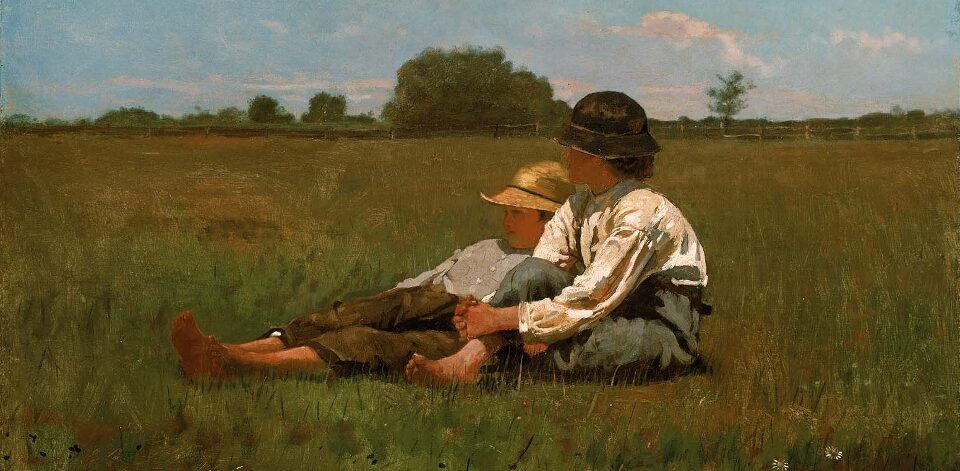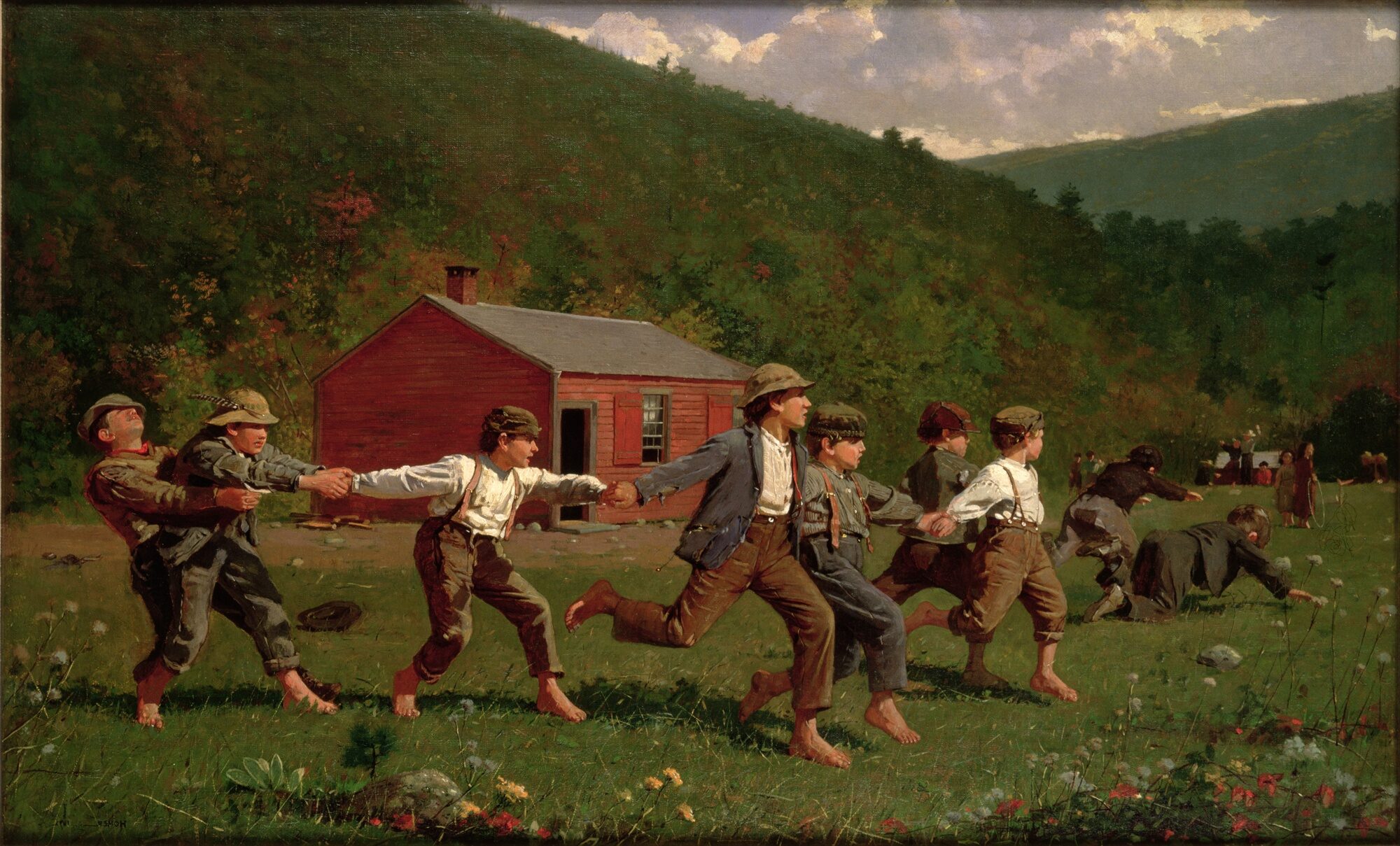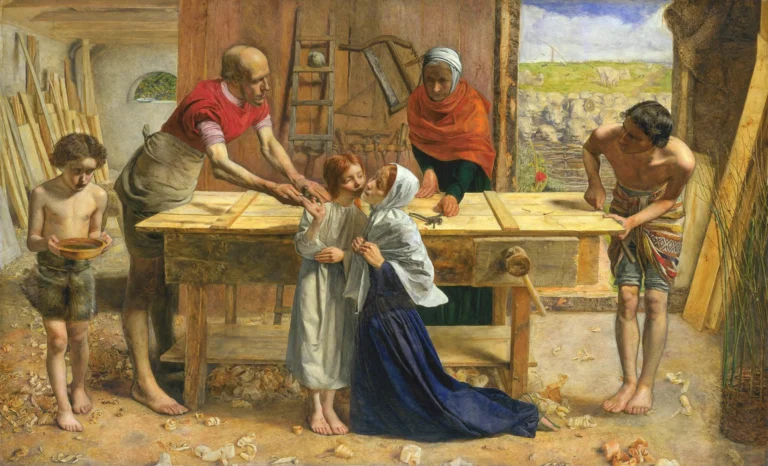Winslow Homer Painter: American Realist Master of the 19th Century
Born: February 24, 1836, Boston, Massachusetts, U.S.
Death: September 29, 1910, Prouts Neck, Maine, U.S.
Art Movement: Realism, American Realism
Nationality: American
Teachers: J. H. Bufford and Frédéric Rondel
Institution: Lithography Apprenticeship, National Academy of Design
Winslow Homer Painter: American Realist Master of the 19th Century
Early Life and Career
Winslow Homer’s journey as an artist began in mid-19th century Boston. His early exposure to art shaped his future career.
Initial Exposure to Art
Winslow Homer was born in Boston in 1836. His mother, Henrietta Benson Homer, was an amateur watercolorist who provided his first introduction to art. This early exposure at home laid the foundation for his future artistic pursuits.
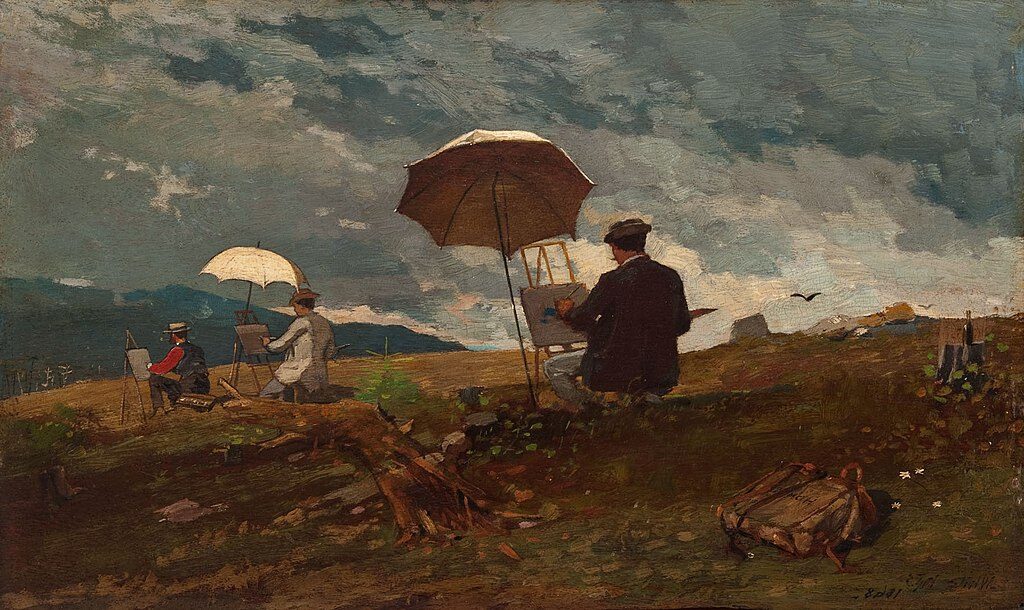
Artists Sketching in the White Mountains, 1868 – Winslow Homer
At the age of 19, Homer began an apprenticeship at John Bufford’s lithographic firm in Boston. This position gave him practical training in commercial art techniques.
During this formative period, he learned how to create detailed illustrations and developed a keen eye for composition.
Homer’s childhood in Boston exposed him to the bustling maritime culture that would later influence his artwork. His early years were marked by a curiosity about the world and developing observational skills that would serve him throughout his career.
Early Illustrations and Civil War Impact
In 1859, Homer moved to New York City to work as a freelance illustrator. He created images for popular magazines like Harper’s Weekly, establishing himself as a skilled commercial artist. His illustrations captured everyday American life with remarkable accuracy and detail.

Prisoners from the Front, 1866 by Winslow Homer
The Civil War marked a turning point in Homer’s career. He visited the front lines as an artist-correspondent, documenting the realities of war through his sketches.
These firsthand experiences provided powerful material for his work.
His wood engravings from this period demonstrated his ability to convey human emotion and narrative through art. The war illustrations showcased his growing talent for capturing momentous events and ordinary human experiences with equal skill.
After the war, Homer began transitioning from commercial illustration to oil painting. This shift allowed him to develop his distinctive artistic voice while building on his strong foundation in observational drawing and storytelling.
Artistic Development and Major Works
Homer’s artistic journey evolved dramatically throughout his career, moving from illustration to mastering both oil painting and watercolor techniques. His subject matter shifted from everyday American scenes to powerful seascapes that showcased his growing technical abilities.
Transition to Oil Painting
After working as an illustrator during the Civil War, Homer began serious oil painting in the late 1860s. His early works captured American rural life with remarkable authenticity.

Snap the Whip, 1872 by Winslow Homer
“Snap-the-Whip” (1872) depicts boys playing in a schoolyard, demonstrating his skill at portraying everyday American experiences.
In 1867, Homer traveled to Paris where he absorbed French artistic influences. Unlike many contemporaries, he didn’t adopt Impressionist techniques directly but developed his own distinctive style characterized by bold compositions and strong outlines.
His return to America marked a period of artistic growth. Homer’s paintings from this era show increased confidence in handling oil paint and more complex subject arrangements.
He moved away from illustration toward more serious artistic expression.
Influence of the Maine Coastline
The rugged coastline of Maine profoundly shaped Homer’s mature style. In 1883, he settled at Prout’s Neck, Maine, where the dramatic seascapes became his primary subject.
Maine’s harsh weather and powerful ocean scenes allowed Homer to explore themes of human struggle against natural forces. His technique became more forceful and direct during this period.
The isolation at Prout’s Neck seemed to intensify Homer’s vision. His paintings from this time feature darker palettes and more dramatic compositions than his earlier work. The constant observation of sea and sky gave his marine paintings unmatched authenticity.
Significant Pieces Explained
“Breezing Up” (1876), housed in the National Gallery of Art, represents Homer’s early mastery of maritime scenes. The painting shows a man and boys sailing, capturing both the joy of the activity and Homer’s growing technical skill with light and movement.

Breezing Up (A Fair Wind), 1873–76 by Winslow Homer
“The Gulf Stream” (1899) stands as one of Homer’s most powerful works. It depicts a man on a dismasted boat surrounded by sharks, portraying human vulnerability against natural forces. The dramatic tension and technical excellence make it a landmark in American art.
Homer’s watercolors, particularly those painted in the Bahamas, demonstrate his versatility. These works feature vibrant colors and fluid technique that contrast with his more somber oil paintings while maintaining his characteristic directness.
His later works increasingly focused on the elemental struggle between humans and nature, using simplified compositions with greater emotional impact.
Techniques and Artistic Contributions
Winslow Homer developed distinctive artistic approaches that set him apart as one of America’s finest painters. His technical innovations blended multiple styles while capturing the raw essence of American landscapes and seascapes.
Mastery of Watercolor
Homer’s watercolor techniques revolutionized American art in the late 19th century. Initially self-taught, he evolved from precise illustrative work to more fluid and expressive applications.
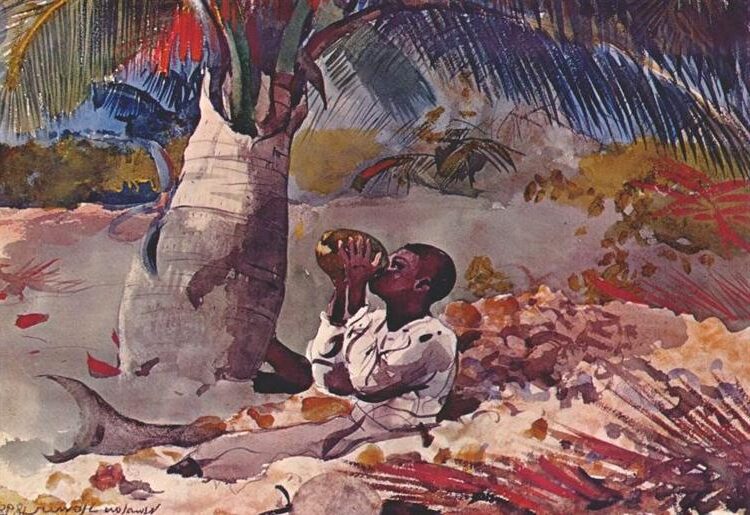
Under the Coco Palm, 1898 by Winslow Homer
His watercolors featured transparent washes that allowed the paper to show through, creating luminous effects particularly evident in his Caribbean and Maine seascapes.
Homer often worked outdoors, capturing immediate impressions of light and atmosphere. This direct approach gave his watercolors a spontaneous quality while maintaining careful composition.
Unlike many contemporaries, Homer embraced watercolor as a serious medium rather than merely preliminary sketches. His bold approach included selective detail, strategic blank spaces, and dramatic compositions that influenced generations of American watercolorists.
Evolution of Realism and Use of Light
Homer’s oil paintings demonstrate his evolution from documentary-style Civil War scenes to profound explorations of human relationships with nature. His technique blended Realist precision with elements of Impressionist light handling.

Fox Hunt, 1893 by Winslow Homer
He developed a distinctive brushwork style—sometimes smooth and detailed, other times bold and expressive—that captured the power of crashing waves and the solidity of rock formations along the Maine coast.
Light plays a crucial role in Homer’s compositions. He meticulously observed natural light conditions, whether depicting the harsh midday sun or the softer glow of dawn and dusk.
His later works show increasing abstraction, reducing landscapes to essential forms while maintaining emotional impact. This modernist tendency places Homer as a bridge between traditional representation and 20th-century artistic developments.
Frequently Asked Questions
Winslow Homer’s artwork presents a fascinating study of American artistic development during the 19th century. His unique approach to subjects ranging from Civil War scenes to powerful seascapes has established his place as one of America’s most influential painters.
What are the defining characteristics of Winslow Homer’s painting style?
Homer’s style is characterized by bold, straightforward compositions and a realistic approach to subjects. He used strong brush strokes and a vibrant palette that captured light and atmosphere effectively.
His work evolved from the detailed illustrations of his early career to more expressive and emotionally charged paintings in his later years. This evolution shows his growing mastery of both technique and artistic vision.
Homer’s art features direct observation rather than idealization, giving his work an honest, sometimes stark quality. His ability to convey emotion through simple yet powerful scenes distinguishes him from many contemporaries.
Which painting is considered Winslow Homer’s masterpiece, and why?
“The Gulf Stream” (1899) is often cited as Homer’s masterpiece for its dramatic portrayal of a man in a small boat surrounded by sharks during a storm. The painting combines technical excellence with profound emotional and symbolic content.
“Snap the Whip” (1872) represents another pinnacle of Homer’s work, celebrated for its nostalgic yet unsentimental depiction of rural American childhood. Its composition and emotional resonance have made it an iconic American image.
“The Fox Hunt” (1893) stands out for its stark winter landscape and powerful narrative of survival. These works demonstrate Homer’s ability to infuse seemingly simple scenes with deeper meaning.
How did the American Civil War influence Winslow Homer’s artwork?
The Civil War profoundly shaped Homer’s artistic development, as he worked as an illustrator for Harper’s Weekly during the conflict. His firsthand observations of camp life and battle scenes provided material for numerous sketches and illustrations.
Homer’s “Prisoners from the Front” (1866) reflects his wartime experiences while demonstrating his emerging artistic maturity. The psychological complexity of this work reveals his keen understanding of the war’s human impact.
After the war, Homer continued to process these experiences through paintings that explored themes of reconciliation and renewal. The conflict’s influence can be traced through his evolving approach to human subjects and narrative.
In what ways did Winslow Homer contribute to American realism through his works?
Homer helped establish American realism by depicting ordinary people engaged in everyday activities with honesty and dignity. His work rejected sentimentality and romanticism in favor of authentic representations of American life.
His technical innovations included a direct, unembellished painting style that captured essential details without unnecessary ornamentation. This approach influenced generations of American realist painters.
Homer’s focus on distinctly American subjects—from rural schoolchildren to Adirondack hunters to coastal workers—helped define a national artistic identity. His work celebrated American experiences without glorification or condemnation.
What role did nature and the sea play in Winslow Homer’s paintings?
Nature and particularly the sea became Homer’s predominant subjects in his later career. His marine paintings capture the power, beauty, and danger of the ocean with remarkable authenticity.
After moving to Prouts Neck, Maine in 1883, Homer produced increasingly powerful seascapes that explored humanity’s relationship with natural forces. These works often feature dramatic waves, treacherous rocks, and the constant struggle between humans and nature.
Homer’s marine paintings demonstrate his mastery of watercolor techniques, allowing him to convey the transparency and movement of water. His ability to capture the distinctive light and atmosphere of coastal environments remains unmatched.
How has Winslow Homer’s work impacted the perception and evolution of American art?
Homer helped establish an authentic American artistic voice distinct from European traditions. His work demonstrated that American subjects and landscapes could form the basis of significant art.
His influence extends through generations of American painters. They admired his technical skill and straightforward approach. Artists from the Ashcan School to Andrew Wyeth have acknowledged their debt to Homer’s vision.
Homer’s ability to create work that was simultaneously accessible and profound secured his position in American art history. His paintings continue to resonate with viewers through their combination of technical excellence and emotional truth.

